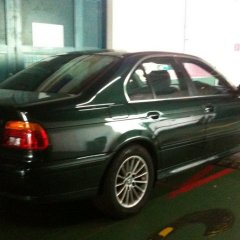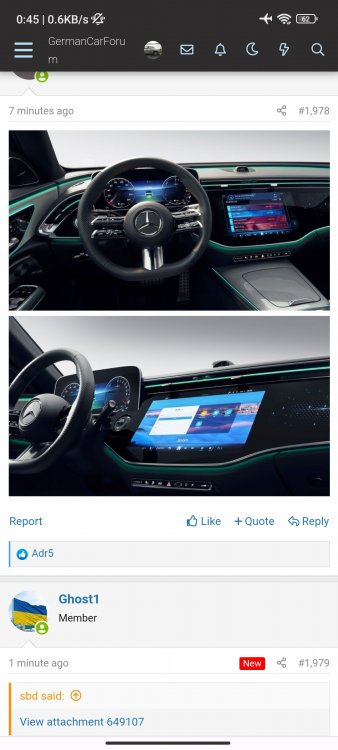Search the Community
Showing results for tags '2024'.
-
Good Luck 3 useful links for MCFers Real Time COE Bidding Results Check Your COE Bidding Status Latest COE Prices and Trending Highest Record Cat A => $106,000 [Oct 2023] Cat B => $150,001 [Oct 2023] Cat C => $91,101 [Mar 2023] Cat D => $13,189 [Nov 2022] Cat E => $158,004 [Oct 2023] Lowest Record Cat A => $2 [Nov 2008] Cat B => $200 [Jan 2009] Cat C => $1 [Mar 2007] Cat D => $1 [Mar 2003] Cat E => $3,000 [Feb 2009] Upcoming Bidding Exercise The details of the March 1st open bidding exercise for Certificates of Entitlement (COEs) are as follows: Tender opens: Monday, 4 March 2024, 12 noon Tender closes: Wednesday, 6 March 2024, 4.00 pm Tender results: Wednesday, 6 March 2024 (Available on www.onemotoring.lta.gov.sg) The total quota available for this tender is 2,550 for the following vehicle categories: NON-TRANSFERABLE CATEGORIES Category A : Cars (up to 1,600cc and maximum power up to 97kW (130bhp); and fully electric car with maximum power up to 110kW (147bhp)) => 963 Category B : Cars (above 1,600cc or maximum power above 97kW (130bhp); and fully electric car with maximum power above 110kW (147bhp)) => 708 Category D : Motorcycles => 520 TRANSFERABLE CATEGORIES Category C : Goods Vehicles and Buses => 200 Category E : Open Category => 159
- 240 replies
-
- 15
-

-
New start for 2024. lobang to share for cinema goers, GV movie pass.
-
What’s your thought on the 2024 COE trend? I read one article about many new cars were registered in Jun 2014 till end of 2015. Something like that. Hence the supply of these COE should flow back and make available from mid 2024 onwards. Hopefully the COE prices can further drop like $30 to $40K by end of 2024🙏
-
The MPV look gigantic in size (5 mm shy of 5 m from end to end), and finally available in 2.4L Turbo, producing a healthy 275 horsepower and 430 NM. Toyota has unveiled the fourth-generation Alphard alongside the Vellfire. These follow the recently introduced posh Lexus LM, a mechanically related vehicle based on the same TNGA-K platform. The twin are the first Toyota models to have steps on both left and right sliding doors, with a step emerging about 220 millimeters above ground. The boxy minivans are 4995 mm long and share a massive wheelbase stretching at 3000 mm. Both are 1850 mm wide while height depends on the model and trim level, either 1935 mm or 1945 mm. The Alphard and Vellfire can seat up to six people in a 2+2+2 layout with second-row captain's chairs. There's now an extra 5 mm between the first two rows and an additional 10 mm between the second and third rows. Both can be had with front- or all-wheel drive as well as a hybrid powertrain, with a plug-in hybrid setup to be added later. The most powerful of the bunch is a turbocharged 2.4-liter, four-cylinder engine available in the Vellfire. "Tuned to deliver a sporty sound," it makes 275 hp (205 kilowatts) and 430 Newton-meters of torque. Customers can also pick a hybrid based on a 2.5-liter gasoline engine with a combined output of 250 hp (184 kW). Lesser Alphard models have a non-electrified, naturally aspirated 2.5-liter, four-cylinder unit with 180 hp (134 kW) and 235 NM. Depending on the engine, the minivans come with a CVT, an e-CVT, or an eight-speed automatic.
- 23 replies
-
- 12
-

-
Basically a Toyota Yaris Cross in a tuxedo. Rumors of a fancier Yaris Cross have been swirling around for years and now the Lexus LBX is officially here. Positioned below the UX and serving as the new entry-level model, the tiny crossover is an indirect replacement for the defunct CT hatchback. It rides on the same GA-B platform as its Toyota sibling but with different styling to better fit Lexus' design language both inside and out. The LBX is 4,190 millimeters long, 1,825 mm wide, and 1,545 mm tall, while having a wheelbase of 2,580 mm. Riding on 18-inch wheels as standard equipment, the petite Lexus is actually slightly bigger than the Yaris Cross and tips the scales at 1,280 kilograms. It will be offered with a choice between front- and all-wheel drive, with all configurations coming exclusively with a continuously variable transmission. At the heart of the LBX is a hybrid powertrain based around a three-cylinder, 1.5-liter gasoline engine. It produces a combined output of 134 horsepower (100 kilowatts - just nice in cat A) and a maximum torque of 185 Newton-meters. It's enough electrified punch for a 0 to 100 km/h run in 9.2 seconds and a maximum towing capacity of 750 kilograms. All versions of the latest Lexus get a MacPherson strut front suspension while the rear uses a torsion beam for the FWD models and a double wishbone if you opt for AWD. Although the technical specifications for the latter have yet to be disclosed but it will add an electric motor at the rear. Interestingly, the small crossover has an aluminum hood as well as molded resin wheel arches, rockers, and lower door sections to keep weight down. Stepping inside, the LBX boasts a 12.3-inch fully digital instrument cluster with an optional head-up display joined by a 9.8-inch touchscreen. The infotainment supports both Apple CarPlay and Android Auto, but only the former has wireless connectivity. Lexus has once again teamed up with Mark Levinson, which supplies the 13-speaker sound system that comes along with a subwoofer. Stick to the front-wheel-drive model and you get a cargo capacity of 332 liters with the rear seats in place. The AWD-equipped LBX is likely to be less practical due to the extra hardware installed at the back. Lexus mentions it hasn't made any compromises in terms of quality and attention even though this is the new entry-level model. The LBX is the company's first model for which development primarily took place in Europe. It's scheduled to enter production by the end of this year and go on sale in Europe along with additional markets in early 2024.
- 46 replies
-
- 13
-
.png)
-

-
Looking forward to more freebie announcements this year!
-
People as old as me would have remember the iconic Renault 5 in the 70s to mid 90s. I am not going to comment on its reliability not performance, since I have no chance to be in one, but good news for the fans of 5. Thus cutie beast is making a come back, abeit as an EV. Patent images published by the World Intellectual Property Organization (WIPO) show the subcompact model in its full retro-modern glory, which stays true to the concept car unveiled in January 2021. Compared to the concept, the production-intent revival of the R5 has lost the rear light bar on the tailgate to make way for a black trim piece. It has bigger side mirrors and traditional handles for the front doors instead of the sleeker ones on the concept that remained flush with the door panel. Mounted on the C-pillar, the handle for the rear doors is bigger now. The black roof and red accents indicate we’re looking at a high-end version of the small EV. It is worth noting the third-generation Renault 5 will be electric-only but won’t ride on a dedicated EV platform. The new hatch that’ll dust off a legendary moniker last used in 1996 will adapt the underpinnings of the Clio by sourcing as much as 70 percent of the hardware to slash production costs by nearly a third compared to the Zoe. The platform has been dubbed AmpR Small (formerly CMF-B EV). Unusual for a B-segment car, it's going to have a multi-link rear suspension, which should translate into sharper handling.
-
After the Corolla Cross and new Crown, another iconic Toyota model has been SUV-nised... I seriously hope the trend will stop soon. @Toeknee_33what's your thought? Toyota announced the debut of an all-new model on September 6, which will be streamed live on YouTube from Tokyo, Japan. The automaker didn’t name the model but the official teaser photos showing portions of the front and rear suggest it will be the already-confirmed Century-branded SUV. Stay tuned for more updates. 🙂
- 29 replies
-
- 13
-

-

-
This is not an April Fool joke! Let see how this full size MPV will fare against the Lexus LM and Mercedes EQV. What started off as a wild rumor at the beginning of the year will become a reality in a matter of months. Yes, Volvo is preparing to launch its first-ever MPV, which it describes as being a "Scandinavian living room on the move." Known as the EM90, the Swedish family hauler "creates room for your life" and will break cover on November 12 when the order books will open in China, the home of parent company Geely. Instead of a product direct from the R&D centre of the Swedish brand, the EM90 is likely to be based on the Zeekr 009, a wild-looking minivan from one of Geely's many brands.
- 14 replies
-
- 11
-

-
.png)
-
Nice outlook, BUT there is NO rear windscreen! A big NO for me. And I find Polestar's naming convention rather confusing. This PS4 actually sit between PS2 (compact sedan) and PS3 (mid-size crossover), Swapping the name with PS3 make more sense imo. The Polestar 4 is the brand’s latest addition to the electric automaker’s growing lineup, with the new SUV slotting between the Polestar 2 sedan and the larger 3 in terms of size and price. The compact crossover adopts a stylish design showcasing key features from the Polestar Precept concept car. The Polestar 4 will be available in both single- and dual-motor layouts. The long-range, dual-motor version produces 544 horsepower and 686 Nm of torque. The crossover can hit 100 kilometers per hour in 3.8 seconds, making it the brand’s fastest production car ever. Even though the Polestar 1 had more power, the Polestar 4 will complete century sprint 60 quicker. The long-range, single-motor version, which powers the rear wheels, makes 272 hp and 343 Nm of torque. Polestar gives the long-range, single-motor variant a preliminary range target of over 483 kilometers based on the US EPA’s test procedure. The automaker fits both long-range models with the same 102.0-kilowatt-hour battery capable of 200-kilowatt DC charging and 22-kW AC. The 4 has bi-directional charging with vehicle-to-load capability and a heat pump as standard equipment. The Polestar 4 debuts with a new drive optimization function that allows drivers to select between range and performance driving modes. Range prioritizes efficiency, with the crossover capable of disengaging the front electric motor to save energy via a disconnect clutch. Performance mode sharpens the 4’s responsiveness and engages both motors at full power at all times. The dual-motor version has a semi-active suspension, while Polestar offers the model lineup with a range of 20- to 22-inch wheel choices wrapped in either Pirelli or Michelin rubber. The crossover features a low aerodynamic nose, retractable door handles, and frameless windows. It has no rear window glass, with the standard glass roof extending behind the heads of the rear-seat passengers. The Polestar 4 crossover is 4,839 millimeters long, 2,139 mm wide, and 1,544 mm tall. It has a 2,999 mm wheelbase, which makes it as big as the Audi Q7 between the front and rear wheels while being shorter overall. Safety is front and center with the Polestar 4. It has nine airbags, 12 cameras, one radar system, and 12 ultrasonic sensors. Drivers glean information from a 10.2-inch display ahead of the steering column, but a 14.7-inch head-up display is available to reduce distractions. It features a nifty “snow mode” that switches the HUD’s text color from white to yellow. A 15.4-inch landscape-oriented infotainment display runs Android Automotive OS. It has built-in Android features like Google Maps, Google Assistant, and the Google Play store. Apple CarPlay is included, and customers can upgrade to a 12-speaker Harmon Kardon sound system. However, those who upgrade to the Nappa Pack get two additional speakers in each front headrest for 16 total. Polestar will offer the sleek crossover with several upgrade packs. The Plus Pack focuses on improving the model’s tech and comfort kit. The Plus Pro Pack adds color-coded body bits, an electrochromic glass roof, and extra interior illumination. The previously mentioned Nappa Pack, which customers can select with the Plus Pack, also adds massaging seats and Nappa leather upholstery with ventilation. The long-range, dual-motor version is available with a Performance Package that includes Polestar Engineered chassis tuning. The pack also comes with 22-inch wheels, four-piston Brembo brakes, and gold details for the brakes, seat belts, and valve caps. The Polestar 4 will begin production this November in China, where it’ll launch first. The company will release more specific details for other markets in 2024, with the vehicle arriving later that same year. Polestar indicates the crossover will have a launch price of US$60,000 to start.
- 40 replies
-
- 11
-

-
.png)
-
Patent images from Brazil registry. The front bonnet is exceptionally and unnecessarily long. Total waste of space (and material) in my opinion since the engine option is unlikely to be anything larger than an IL4 2.0 sump which will be transversely mount as usual. These spy shots give us a glimpse of how the actual car sis going to look like.
-
Look larger and well proportioned. Stay tuned for more info.
- 12 replies
-
- 16
-

-
At a quick glance, I thought that was a Peugeot... Another SUV-nised product in the automotive scene. The fifth generation Renault Scenic has been revealed as an all-electric people mover bearing the E-Tech badge and sitting on the same CMF-EV platform as the Renault Megane E-Tech and Nissan Ariya European compact EVs. Set to be built at Renault’s Douai ElectricCity Factory, the all-new Scenic E-Tech will reach dealerships on the Old Continent at the beginning of next year with a choice of two zero-emissions powertrains, both powered by LG nickel-manganese-cobalt (NMC) batteries. The Standard range version comes with a front-mounted electric motor that makes 125 kilowatts (170 horsepower) and 280 Newton-meters of torque and draws juice from a 60-kilowatt-hour battery pack that can offer over 420 kilometers of driving range (in the WLTP cycle). DC fast charging can be done at up to 130 kW, the 0 to 100 kilometerper hour sprint is achieved in 9.3 seconds, and the top speed is 150 kilometers per hour for this trim. The High range Scenic E-Tech comes with a more potent motor that makes 160 kW (220 hp) and 300 NM of torque, all while receiving electrons from a bigger, 87 kWh pack that enables an estimated range of over 620 km on the WLTP cycle. DC fast charging is possible at up to 150 kW in this case, the sprint to 100 kmph takes 8.4 seconds, while the top speed is 170 kph. With this being said, both variants can be charged on AC power at up to 22 kW.
-
While the CLA concept will only be announced during IAA Munich Auto Show (5 - 10 Sep), prototype with production ready parts has been caught testing on the road in Europe. The upcoming sedan will be part of the newly founded Entry Luxury category. The smallest sedan to carry the three-pointed star will ride on the Mercedes Modular Architecture. The next-gen CLA won't have a bigger brother anymore since Mercedes is pulling the plug on the CLS at the end of this month. Stay tuned for more info.
- 14 replies
-
- 11
-

-
Am I the only one to think that almost all the face of modern EV look the same? The #3 comes with 268 horsepower (200 kilowatts) out of the box courtesy of a single electric motor, while the more powerful Smart #3 Brabus produces a feistier 422 hp (315 kW) via two electric motors, one on each axle. It takes 5.8 seconds for the standard Smart #3 to hit 100 kilometers per hour, and just 3.7 seconds for the Brabus model to do the same. The most efficient, single-motor Smart #3 has 455 kilometers of range on WLTP while the dual-motor model sees that figure drop slightly to 435 km. DC fast charging is listed at 150 kilowatts, which allows for a recharge from 10 to 80 percent in just 30 minutes.
-
Finally a major change in design language for the new Mini. This new Mini Electric look quite refreshing and modernized imo. The images were taken at a facility in China and posted to Chinese social media. In the photos, the undisguised Mini is accompanied by several other camouflaged models parked nearby. It has no visible tailpipe and a limited amount of air intake on the front end, which suggests that this is an electric model. The pictured model is badged with Mini’s “S” badging, designating that this is a higher-performance model. The other camouflaged Minis nearby all have the typical hood scoop of Mini’s S models, but the uncamouflaged version does not. These scoops are used for air intake, but electric cars need less air intake than ICE cars do, so the scoop is somewhat superfluous for an EV. The current Mini Cooper SE electric does have a hood scoop, however. The biggest exterior change is the rear taillights, which change in shape and pattern compared to previous models. They’re also connected by a horizontal black stripe across the whole rear of the vehicle. Current Mini models have patterns reminiscent of the Union Jack, the British flag, imprinted in their taillights. In the photos, it looks like a similar pattern might still be there but is obscured by vertical black lines covering it and by the triangular shape of the taillights. On the interior, the dashboard is a significant departure from current Minis. This new Mini has a flat, bare dash, no driver display, and a floating circular center screen as the main focal point of the car’s infotainment system. The dash has significantly fewer buttons, knobs, and switches than current models, though there are physical controls on the steering wheel and a few (stereotypically-Mini) switches underneath the screen. This lack of physical controls suggests that the circular screen will be a touchscreen. The small screen in front of the driver is a heads-up display, which is likely carried over from the current Minis.
- 46 replies
-
- 11
-

-
PSA. Please check your devices in advance so as to minimize disruption before 3G network is officially retired. From GPS to security systems: Older smart devices may not work after 3G shutdown Source: https://www.channelnewsasia.com/singapore/3g-network-shutdown-internet-things-iot-smart-devices-3718556 Smart devices bought 10 to 20 years ago could be affected by the 3G network shutdown next year, an expert says. SINGAPORE: The shutdown of Singapore’s 3G network by end-July next year could affect a minority of Internet of Things (IoT) systems, and this is your reminder to check that your devices will stay connected. Experts do not expect the impact of the shutdown on individual consumers to be significant, as those who use personal smart devices are likely to have kept these up to date. But IoT equipment that was bought 10 to 20 years ago could be affected when mobile network operators Singtel, StarHub and M1 retire their 3G services, an expert said. IoT devices function by connecting to a wireless network. Their applications range from GPS navigation devices to security and alarm systems and environmental monitoring devices. Some of these devices rely on 3G mobile networks to transmit data, and may not be compatible with newer 4G or 5G networks. The 3G technology entered the Singapore market almost 20 years ago, and the next wave of 4G developments took place in the mid-2010s, according to the Infocomm Media Development Authority. IoT adoption accelerated in the past few years, when 4G adoption was already widespread. But National University of Singapore Associate Professor Tham Chen Khong said he would not be surprised if there was still “2 or 3 per cent” of IoT equipment purchased in the early 2000s. There is rapid growth in the deployment of IoT devices, robots, drones and other remotely managed devices in the manufacturing, warehousing and “smart urban” sectors, said Dr Francois Chin, head of the 5G & Beyond Programme at the Institute for Infocomm Research. IoT system components – such as certain sensors, industrial equipment and other machine-to-machine devices that use 3G technology – could be “significantly affected” by the network shutdown, he said. Organisations that depend on these devices for data collection or operations will need updates or replacements to ensure continued connectivity. But companies should also look at “future-proofing” their business operations and not just replacing devices, said Dr Chin. Telcos and IoT service providers told CNA they are contacting customers about network migration and upgrading or replacing their devices if connectivity is going to be affected. A Singtel spokesperson said only a “very small proportion” of its IoT customers use 3G, and the telco is working closely with them to facilitate migration to newer networks. M1’s IoT services are not affected by the retirement of the network as its 3G SIM cards are 4G-ready, a spokesperson said, adding that customers would need to ensure their IoT equipment can support 4G. The spokesperson added that many customers are already working with their partners to customise the hardware with compatible SIM card inserts. M1 has also been offering equipment refreshes by providing 4G- or 5G-capable routers to customers that do not require any hardware customisation. One service provider is checking the vehicle monitoring systems of luxury cars across Singapore to ensure that their SIM cards are compatible with newer networks. The SIM cards of most of these vehicles were issued in their country of manufacturing, said Mr Patrick Lim, director for group strategy at Ademco Security Group, which provides security and fire protection solutions. The car manufacturers may use older SIM cards to save costs. Ademco will be communicating with the manufacturers about this, including on whether vehicle recalls will be needed to upgrade the SIM cards, he said. Another group at risk of losing connectivity are the enterprises that choose to run their security and fire protection systems by themselves in-house after the service provider has set it up, said Mr Lim. With time, these customers may forget about the arrangements in place, and may not be up to date on the 3G network retirement, he said. While the proportion of such customers is not big for Ademco, it is “significant enough that I remember them”, said Mr Lim. He added that during the previous retirement of the 2G network in April 2017, some such customers on 2G connections experienced disruption.
- 3 replies
-
- 4
-

-
- 3g network
- telco
-
(and 2 more)
Tagged with:
-
Both the exterior and interior have the Land Rover vibe, and seems up market.
- 24 replies
-
- 13
-

-
This compact electric SUV will be even smaller than the XC40, with an estimated dimensions of 4.2m (L) x 1.8m (W) x 1.6m (H). Design wise, the line between products from Volvo and Polestar is getting blurry, and can see that the rear windscreen is very narrow (by SUV standard), again compromising practicality for aesthetic appeal...
-
Honey, I shrunk the Avante...
- 12 replies
-
- 15
-
.png)
-

-
Kudos to Lotus for going against all odds to come out with this proper sedan of its own, no longer just a badge engineered Proton. Lotus Electric Sedan Shows Its Sleek Production Body For First Time Following the unveiling of the Eletre electric performance SUV, Lotus Cars is applying the finishing touches to another all-electric product that takes the sleek shape of a fastback sedan. Internally codenamed Type 133, the Lotus electric sedan may be named Envya or Etude based on earlier trademark filings from China. A prototype has been spotted by one of our photographers undergoing cold weather testing in northern Scandinavia, near the Arctic Circle. Previously shown in shadowy teasers, the Lotus electric sedan makes its first appearance in the wild without bulky disguise in the form of this test prototype, giving us the best look so far at the brand's future Porsche Taycan rival. Despite the livery that pays tribute to Lotus Cars' 75th anniversary, we can draw some conclusions about its styling. The sedan features several common cues with the Lotus Eletre. Those include the split headlights and rear light bar – though the prototype has placeholder lights at the moment – diamond-pattern active lower grille, rising belt line, rearview cameras instead of side mirrors, and pop-out door handles. Other details worth a mention include a roof-mounted LiDAR and massive ventilated brake discs hugged by chunky calipers. Overall, the low-slung fastback sedan looks aggressive and will certainly provide more surprises once the camouflage tape gets removed. Inside, the new Lotus EV is expected to share the seats and steering wheel with the Eletre, as well as other components. It will be a four-seater with a full-length center console, and it will likely offer a full glass roof. Not much else is known about the new model, and that includes the powertrain. However, the automaker doesn't have too look too far for a high-performance dual-motor AWD powertrain as it can borrow the dual-motor AWD setup from the Eletre R that makes 905 horsepower (675 kilowatts) and 985 Newton-meters (726 pound-feet) of torque. The Lotus Eletre R does 0 to 62 mph (100 km/h) in just 2.95 seconds and hits a top speed of 165 mph (265 km/h), so you can imagine this powertrain can achieve even superior performance when paired with a more aerodynamic (and possibly lighter) bodywork. Whatever powertrain this Lotus electric sedan prototype has under the skin, it wasn't working properly on that particular day as one of the photos shows it on the back of a tow truck. This is quite common for test prototypes, especially in early development stages. Lotus will reportedly unveil the Type 133 later this year, with sales expected to follow sometime in 2024.
-
This is supposedly the 3rd generation XC90, which Volvo decided to give it a name change to signify the switch to all electric drive train. Earlier reports, however, suggested that the model, which it is said will blend SUV and sedan design elements, will be named Embla, after the first woman in Norse mythology. Next-Gen Volvo XC90 EV Design Allegedly Revealed In Patent Images In any case, Volvo announced in February that it would be keeping the XC90 around for a few more years. The SUV that heralded the brand’s modern revival will continue to be produced in Torslanda, Sweden, after a visual update.
-
A nice update which retain the shape we are all familiar with, yet the design cues is catching up with the electric era. While the overall shape is immediately recognizable as a Mini, there are notable changes to the next-gen version. New oval headlights are larger with dual horizontal elements inside. They sit atop a front fascia that is smoother overall, lacking corner vents but brandishing a slightly larger grille surround with squared corners. At the back, the new taillights a departure from the current design. They are much smaller overall, switching from a rectangle to a triangle shape with the Union Jack still displayed when lights and brakes are activated. The lights are connected by a prominent strip of black trim across the rear hatch, and below, a new rear fascia incorporates vertically oriented reflectors in scallops on the edges. This is an electric model, so you won't find exhaust outlets. At this point, it's worth noting that electric and internal-combustion next-gen Minis will co-exist, and they will carry some unique styling cues to set them apart. Among other things, expect to see fender emblems for combustion-powered models, and of course, the grille will have openings for air to enter. Combustion engines will incorporate a 48-volt mild hybrid system for added efficiency. As for the Mini seen here, reports say there will be two EVs offered with different battery packs. The starting point will be a 40-kWh pack, with the up-spec SE model wielding a 54-kWh pack. That should give the new Cooper a range of around 240 miles under WLTP testing, which tends to be generous. Buyers will have a choice between 181 or 215 horsepower.







